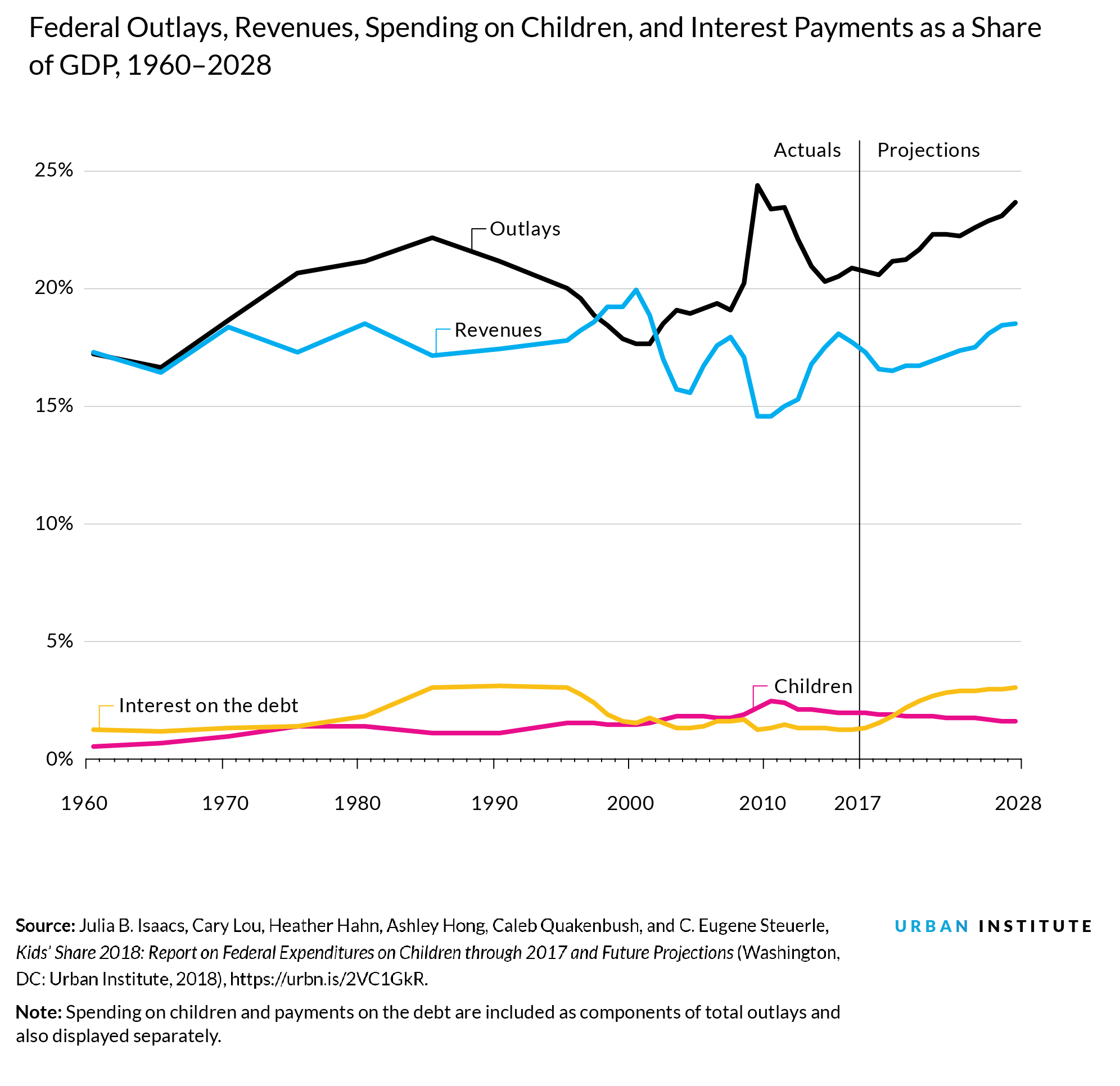
Within the next few years, the US is expected to be spending more on interest payments on the national debt than on investments in children. How sustainable is that course? And if government spending reflects our national priorities, then what does this trend say about us?
Today, the Peter G. Peterson Foundation will host its 2019 Fiscal Summit: Building America’s Future, which will “bring together leaders, experts, and policymakers to discuss how to build a sustainable fiscal future to put America on a path for prosperity, leadership, and growth.” In my comments at the summit, I will make the point that building a sustainable fiscal future will require, among other things, public investments in children.
Parents and families provide for most of children’s basic needs, but public expenditures also play a vital role in supporting children’s access to food, shelter, good health, education, and equality of opportunity. For example, in 2017, about $112 billion was spent on children’s health through Medicaid and other health programs, and $58 billion supported children’s nutrition through the Supplemental Nutrition Assistance Program (SNAP, formerly food stamps), the school lunch and breakfast programs, and other child nutrition programs, according to the Urban Institute’s Kids’ Share 2018 report.
But federal spending on children is shrinking
After peaking at 10.7 percent of federal spending in 2010, in the aftermath of the recession, federal spending on children has been declining and is projected to continue declining from about 9 percent in 2017 to less than 7 percent of total federal spending in 2028.

Along with interest payments on the national debt, a growing share of the federal budget over the next decade will go toward Social Security, Medicare, and Medicaid for adults. These trends in spending reflect the need to care for America’s aging populace. But we shouldn’t forget that children also need supports to grow into productive and successful adults.
Why are interest payments exceeding spending on children?
Every year, federal outlays are projected to exceed revenues, as they have since 2001. As spending exceeds revenue year after year, the federal debt rises. Because of higher national debt and projected increases in interest rates, interest payments on the debt are projected to more than double by 2028, both as a share of the economy and in dollars.
Reining in spending and increasing revenues to pay for things we truly care about requires creative solutions, hard choices, and compromise. But building a sustainable fiscal future also requires making appropriate investments in our future economy by making critical investments in our children. These investments ensure they receive the resources they need to reach their full potential.
Tune in and subscribe today.
The Urban Institute podcast, Evidence in Action, inspires changemakers to lead with evidence and act with equity. Cohosted by Urban President Sarah Rosen Wartell and Executive Vice President Kimberlyn Leary, every episode features in-depth discussions with experts and leaders on topics ranging from how to advance equity, to designing innovative solutions that achieve community impact, to what it means to practice evidence-based leadership.